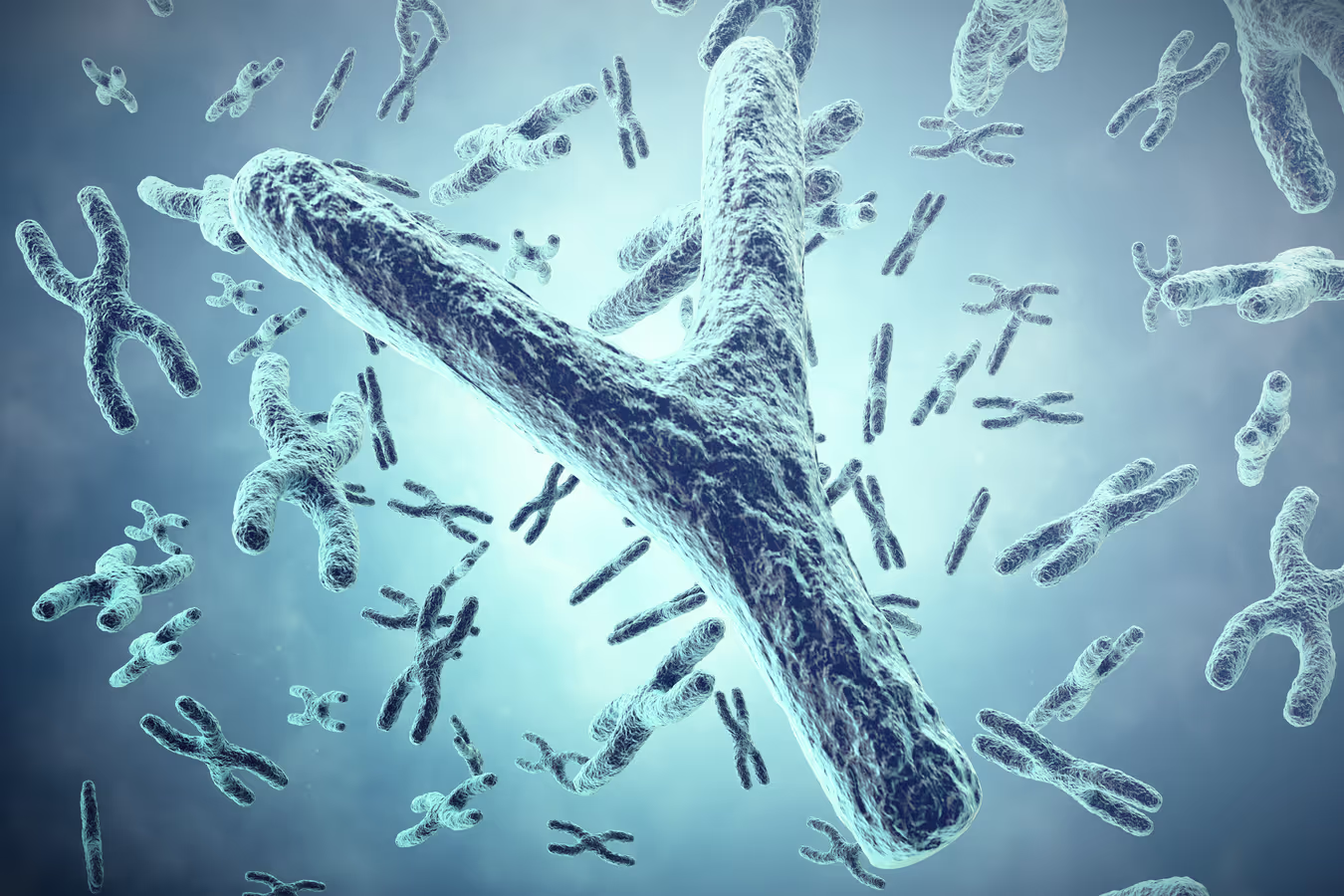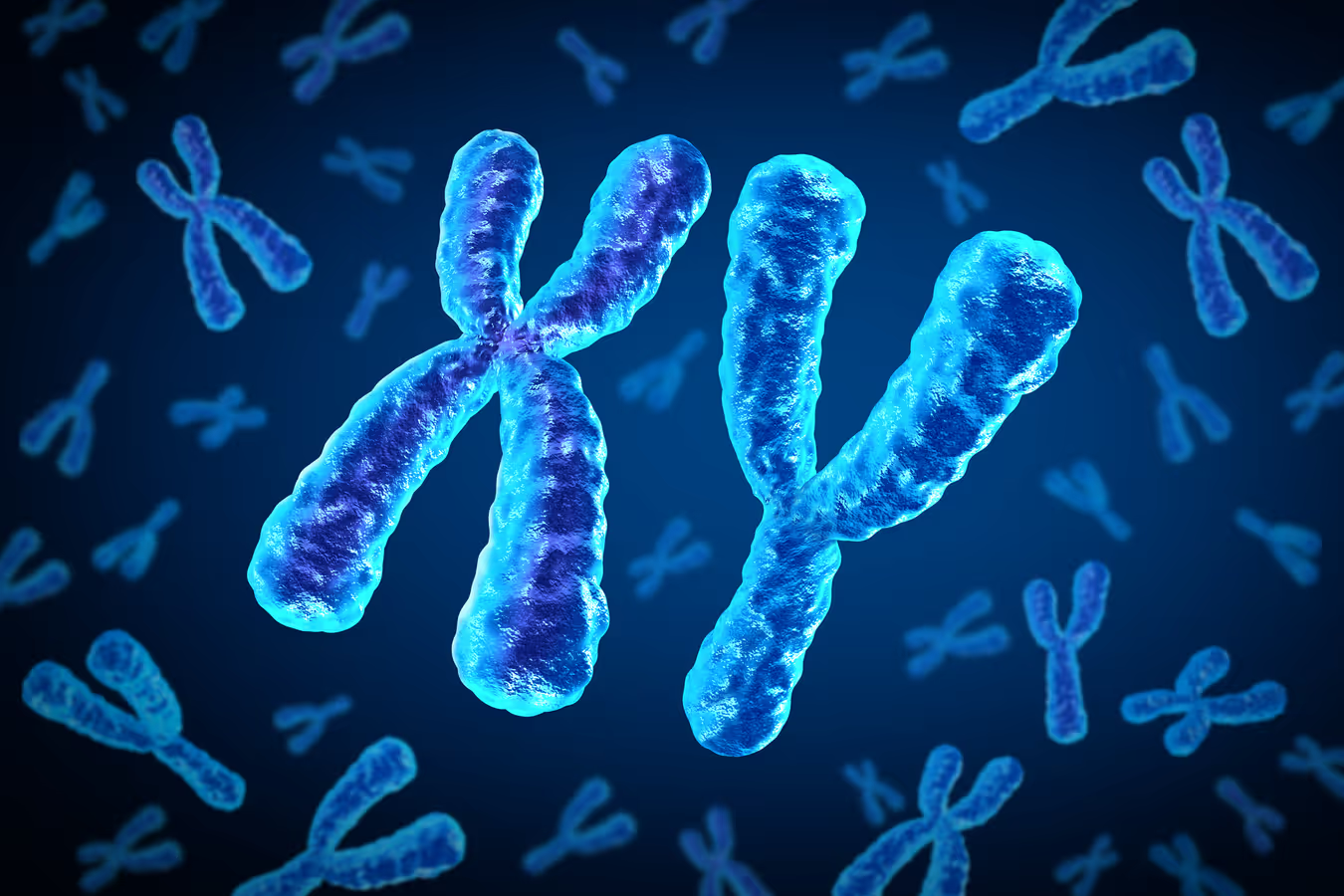
The human Y chromosome, responsible for determining male sex, is shrinking over evolutionary time. This phenomenon has raised questions and concerns about the future of human reproduction and even the survival of our species. This article explores the science behind the shrinking Y-chromosome, its implications for humanity, and possible evolutionary outcomes.
Understanding the Y Chromosome
The Y chromosome is one of the two sex chromosomes in humans, with males typically having one X and one Y chromosome, while females have two X chromosomes. The Y-chromosome is much smaller than the X, containing only about 55 active genes compared to the X chromosome’s 900 genes. The primary function of the Y chromosome is to carry the SRY gene (Sex-determining Region Y), which triggers the development of male characteristics by initiating the formation of testes in a developing embryo. This gene is vital for male sex determination across vertebrates.
The Shrinking Phenomenon
Over the past 166 million years, the Y chromosome has lost most of its original genes. Starting with nearly 900 genes, it has gradually shed much of its genetic material, leaving only about 55 active genes today. If this trend continues, scientists predict that the Y-chromosome could disappear entirely within the next 11 million years. However, this potential extinction of the Y chromosome doesn’t necessarily spell doom for humanity.
Several studies suggest that the process of gene loss is slowing, indicating that the Y-chromosome might stabilize and persist in its current form for a much longer time. The shrinking of the Y chromosome can be attributed to its lack of recombination with a partner chromosome (unlike the X chromosome, which can recombine with another X chromosome in females). This leaves the Y chromosome more vulnerable to the accumulation of harmful mutations and gene loss.
What Happens If the Y Chromosome Disappears?
The potential disappearance of the Y chromosome has led to concerns about the future of male fertility and the continuation of the human species. Without a Y-chromosome, how would males develop, and what would happen to human reproduction?
Interestingly, nature offers a glimpse of possible solutions. Certain rodent species, such as the mole voles of Eastern Europe and the spiny rats of Japan, have already lost their Y chromosomes but continue to thrive. In these species, the necessary genes for male sex determination have been relocated to other chromosomes. For example, in spiny rats, a duplication near the SOX9 gene on chromosome 3 has replaced the function of the missing SRY gene. This duplication can activate SOX9, allowing male development without the Y chromosome.
This evolutionary adaptation raises the possibility that humans could follow a similar path, potentially evolving a new sex-determining mechanism to replace the Y-chromosome if it were to disappear.
Implications for Human Evolution
The potential disappearance of the Y chromosome could lead to significant changes in human evolution. If humans were to evolve new sex-determination systems, it could result in the emergence of different human species, each with its own unique set of sex chromosomes. This divergence could happen if different populations develop distinct sex-determining genes, leading to reproductive isolation and the eventual formation of new species.
Moreover, some scientists speculate that the end of the Y chromosome might not necessarily mean the end of men. Instead, it could lead to a new form of reproduction or the evolution of alternative sex-determination genes, similar to the changes observed in certain rodent species.
The Broader Impact on Genetics and Society
The shrinking Y chromosome also raises broader questions about genetics, reproduction, and society. The possibility of the Y-chromosome’s disappearance challenges our understanding of sex determination and opens the door to new research in genetics and evolutionary biology.
For instance, studying how other species have adapted to the loss of the Y chromosome can provide insights into potential future scenarios for humans. It also emphasizes the importance of preserving genetic diversity and understanding the mechanisms that drive genetic changes over time.
From a societal perspective, the potential changes in human reproduction could have profound implications for gender roles, reproduction technologies, and even the future structure of families. While these possibilities may seem distant, they underscore the importance of continued research and discussion on the topic.
Conclusion: A Future of Uncertainty and Possibility
The shrinking Y chromosome presents both challenges and opportunities for humanity. While the idea of losing the Y chromosome may seem alarming, it also highlights the remarkable adaptability of life. Evolution has shown time and again that species can find new ways to survive and thrive in changing environments.
In the case of the Y chromosome, ongoing research into other species’ adaptations offers hope that humanity could also find a way forward, potentially evolving new sex-determining mechanisms or even entirely new reproductive systems. What seems certain is that the future of the Y chromosome—and indeed, the future of human reproduction—will continue to be a subject of intense scientific study and debate for years to come.
By embracing these changes and continuing to explore the mysteries of our genetic code, humanity can ensure that it remains resilient in the face of evolutionary pressures. The story of the Y-chromosome is just one chapter in the broader narrative of human evolution, a narrative that continues to unfold with each new discovery.

The Historical Perspective: Evolutionary Context of the Y Chromosome
The Y chromosome has a complex history, shaped by millions of years of evolution. Initially, the Y-chromosome was much larger and contained a significant number of genes similar to those on the X chromosome. However, over time, the Y chromosome began to lose genes due to a lack of recombination with a homologous chromosome, unlike the X chromosome, which pairs with another X in females. This evolutionary process is known as “genetic degeneration.”
Understanding the evolutionary context of the Y-chromosome provides insights into why it is shrinking and what this could mean for its future. The fact that the Y chromosome has survived despite its shrinking size suggests that it has adapted to its limited role, focusing on preserving the essential genes related to male sex determination and reproduction.
The Debate Among Scientists: Will the Y Chromosome Really Disappear?
The idea that the Y chromosome might disappear has sparked significant debate within the scientific community. Some researchers argue that the Y-chromosome is on a trajectory of eventual extinction, while others believe that it has stabilized and will continue to exist in its current form.
A 2014 study by Dr. Jennifer Graves, a leading expert on the Y chromosome, argued that the Y chromosome’s gene loss is a continuing process and that it could vanish within a few million years. On the other hand, more recent studies suggest that the Y chromosome may have found a way to preserve itself by slowing down the rate of gene loss. These conflicting views highlight the uncertainty surrounding the fate of the Y-chromosome and the need for further research.
Potential Consequences for Male Fertility
The potential disappearance of the Y chromosome raises concerns about male fertility. Since the Y chromosome carries genes that are essential for sperm production, its loss could lead to a decline in male fertility. However, some scientists argue that even if the Y-chromosome were to disappear, other genetic mechanisms could evolve to compensate for its loss.
For example, research has shown that in some rodent species, genes related to male fertility have been transferred to other chromosomes. This raises the possibility that similar genetic adaptations could occur in humans, ensuring that male fertility is preserved even in the absence of the Y chromosome.
Genetic Engineering and the Future of the Y Chromosome
As our understanding of genetics advances, the possibility of using genetic engineering to preserve or even enhance the Y chromosome becomes more plausible. Technologies like CRISPR-Cas9 have revolutionized the field of genetics, allowing scientists to edit genes with unprecedented precision. In the future, it may be possible to use such technologies to prevent the loss of essential genes on the Y-chromosome or to develop alternative mechanisms for sex determination.
For instance, scientists could potentially engineer chromosomes to carry out the functions currently performed by the Y chromosome, ensuring that male development and reproduction continue without interruption. This opens up new avenues for research and could significantly alter the course of human evolution.
Ethical Considerations in Genetic Intervention
The prospect of using genetic engineering to modify the Y chromosome or develop new sex-determination systems raises important ethical questions. Should humanity intervene in its own evolution, or should we allow natural processes to take their course? What are the potential risks and unintended consequences of such interventions?
Ethicists and scientists must carefully consider the implications of genetic engineering, particularly when it comes to fundamental aspects of human biology like reproduction. While the idea of preserving the Y-chromosome through genetic intervention is appealing, it also comes with risks, including the possibility of unforeseen side effects and the ethical dilemma of altering the human genome.
Evolutionary Adaptation: Lessons from Other Species
The study of other species that have lost their Y chromosomes provides valuable insights into how humanity might adapt to similar changes. As mentioned earlier, the mole voles and spiny rats have successfully evolved new mechanisms for sex determination without a Y chromosome. These species demonstrate the remarkable adaptability of life and suggest that humans, too, could find alternative pathways for reproduction if the Y-chromosome were to disappear.
The key to understanding these adaptations lies in the concept of “genetic plasticity,” which refers to the ability of organisms to modify their genetic makeup in response to environmental pressures. In the case of the spiny rat, the duplication of a gene near SOX9 provided a new method for male development, highlighting the potential for similar adaptations in humans.

The Broader Implications for Human Evolution
The shrinking Y chromosome is not just a biological phenomenon; it also has broader implications for human evolution. If new sex-determination systems were to evolve, it could lead to the emergence of distinct human species, each with its own unique set of chromosomes. This could fundamentally alter the course of human evolution, leading to a future where different human populations are separated by their genetic makeup.
Such a scenario raises intriguing questions about the nature of humanity. What would it mean to be human in a world where multiple human species exist? How would society adapt to these changes, and what impact would they have on our understanding of identity, culture, and relationships?
The Future of Research on the Y Chromosome
The study of the Y chromosome is a rapidly evolving field, with new discoveries emerging regularly. As researchers continue to explore the mechanisms behind the shrinking Y-chromosome, they will also investigate potential solutions and adaptations. This research will have significant implications not only for our understanding of genetics but also for the future of medicine, reproduction, and human evolution.
Collaborative efforts between geneticists, evolutionary biologists, and ethicists will be essential to navigating the complex landscape of Y-chromosome research. By working together, scientists can develop a more comprehensive understanding of the challenges and opportunities posed by the shrinking Y chromosome.
Conclusion: Embracing the Uncertainty
The future of the Y chromosome is uncertain, and with it, the future of human reproduction and evolution. While the idea of losing the Y chromosome may seem daunting, it also offers an opportunity to explore new frontiers in genetics and evolution. Humanity has a long history of adapting to change, and the challenges posed by the shrinking Y chromosome may ultimately lead to new discoveries and innovations.
As we continue to study the Y chromosome and its role in human biology, it is important to remain open to the possibilities that lie ahead. Whether through natural evolution, genetic engineering, or a combination of both, humanity will find a way to navigate the challenges of the future. The story of the Y chromosome is far from over, and its next chapter may hold the key to understanding the future of life itself.




Leave a Reply